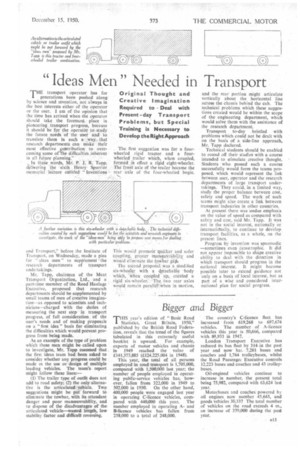Bigger and Bigger
Page 49

If you've noticed an error in this article please click here to report it so we can fix it.
T"year's edition of "Basic Road Statistics, Great Britain, 1950," published by the British Road Federation, reveals that the trend of the figures tabulated in this extremely useful booklet is upward. For esample, exports of motor vehicles and chassis in 1949 reached the value of £141,373,885 (E124.225.004 in 1948).
This year, the total of all persons employed in road transport is 1,705,000, compared with 1,500,000 last year; the number of people employed in operating public-service vehicles has, however, fallen from 322,000 in 1949 to 302,000 in 1950. On the other hand, 400,000 people were engaged last year in operating C-licence vehicles, compared with 440,000 this year. The number employed in operating Aand B-licence vehicles has fallen from 258,000 to a total of 248,000. The country's C-licence fleet has increased from 619,268 to 697,674 vehicles. The number of A-licence vehicles this year is 50,666, compared with 88,933 in 1947.
London Transport Executive has reduced its bus fleet by 314 in the past year and now has 7,201 buses and coaches and 1,764 trolleybuses, whilst the Road Passenger Executive controls 12,223 buses and coaches and 43 trolleybuses.
Oil-engined vehicles continue to increase in number, the present total being 75,982, compared with 63,624 last year.
Motorbuses and coaches powered by oil engines now number 45,645, and goods vehicles 10.337 The total number of vehicles on the road exceeds 4 m., an increase of 379,000 during the past year.




































































































